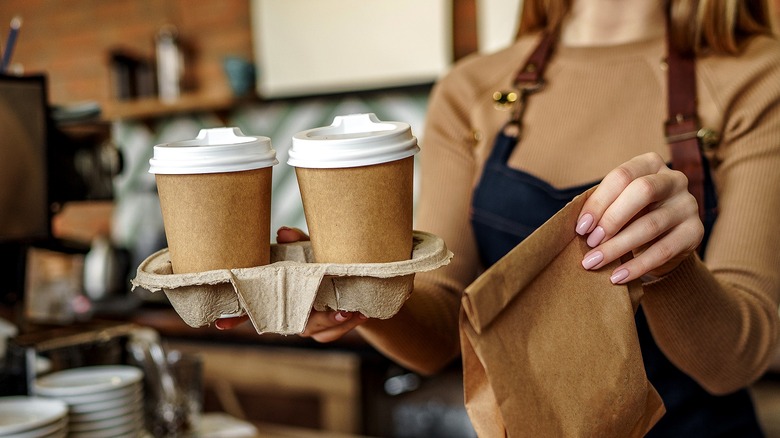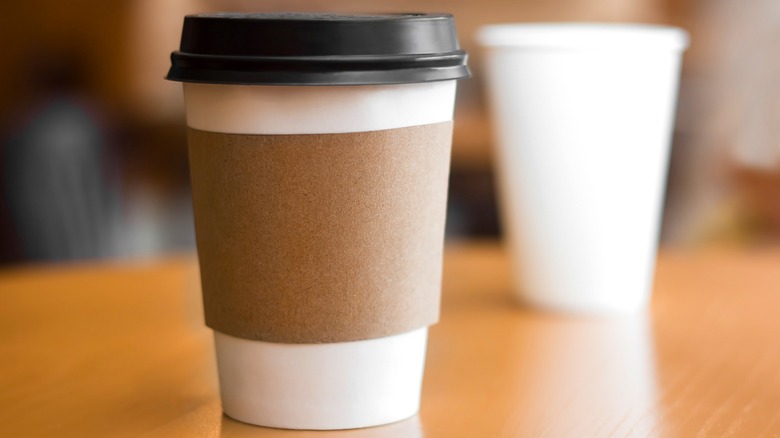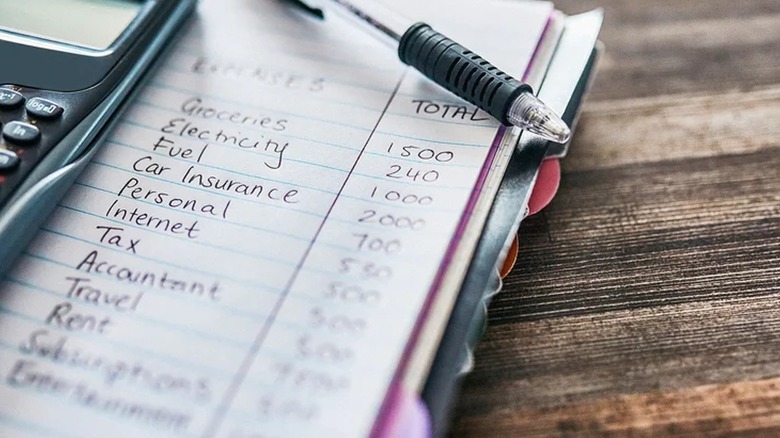What Is The Latte Effect And How Does It Impact You?
The latte effect refers to The Latte Factor®, a concept coined (and trademarked) by David Bach, a financial author and founder of FinishRich Media. Basically, the idea is that small purchases, like a latte, can add up to something much more — as money you could potentially save and grow. It's also not only lattes, of course; it's anything small you buy (or pay for) regularly without giving it much thought.
According to a November 2023 survey by GOBankingRates, 38% of the more than 1,000 people surveyed have $100 or less in their savings. What's more, 49% of Americans in the survey say they live paycheck to paycheck. For these individuals, chances are they're not buying a latte every day. However, if they're regularly spending any money on similarly small purchases, a change to such expenditures could be what helps them save a little more each week, month, year. With the latte effect, the financial point is that a small change can turn into something more significant.
The latte as a metaphor
Consider the cost of a latte in 2024, and let's look at Starbucks vs. Dunkin', specifically. A grande latte at Starbucks costs $4.95 (with regular milk, soy milk woud be 70 cents extra), and at Dunkin', a medium latte costs $4.19 (Dunkin' doesn't offer soy milk, but oat milk will cost $1 more). So, let's round this to $5, like David Bach did with The Latte Factor originally. If you get one $5 latte every weekday, that'll cost you $25 a week, $100 a month, and $1,200 a year. That's how much the latte effect can affect you without you realizing it.
But, as said, the "latte" in The Latte Factor/latte effect isn't about getting coffee specifically. Rather, it's a way to think about how consumers spend. In fact, in 2012, Business Insider reached out to Bach for his response to criticism he received about The Latte Factor being misleading, given that lattes at the time didn't cost $5 and his compounding rate was higher than what would be realistic. Speaking to Mandi Woodruff, Bach said, "The Latte Factor is a METAPHOR for how we waste small amounts of money on small things. It's a teaching method to get people to 're-think' how they spend money, and realize they have more than enough to start saving."
Discretionary spending
From zero-based budgeting to traditional budgeting to pay-yourself-first budgeting (where you'd prioritze goal-based accounts, like a retirement account), wth any budgeting style, usually, there's a portion you allocate for nonessential spending, which would include "fun" money. The 50/30/20 budget, for example, earmarks 30% of every paycheck for discretionary spending or "wants."
This said, setting aside that much might not be realistic for most people, so approach your budget knowing that yours won't be like the next person's. What can be the same, however, is looking more closely at how you spend your money and how much you spend on small purchases that you might not be getting the most out of. If so, such a purchase might be a candidate to move from "fun" to savings.
For example, streaming services. If you subscribe to three services at $7.95, $12.99, and $14.95 a month, that adds up to $35.89 a month or $430.68 a year. And if you have your subscriptions set up with autopay, you likely don't even think about the cost, and just continue to pay it. Yet, how many of these services do you actually watch? If you find you watch one more than the others, you could cancel those other two and likely not even notice a difference in your daily viewing, yet you likely will see the difference in what you are able to save.


